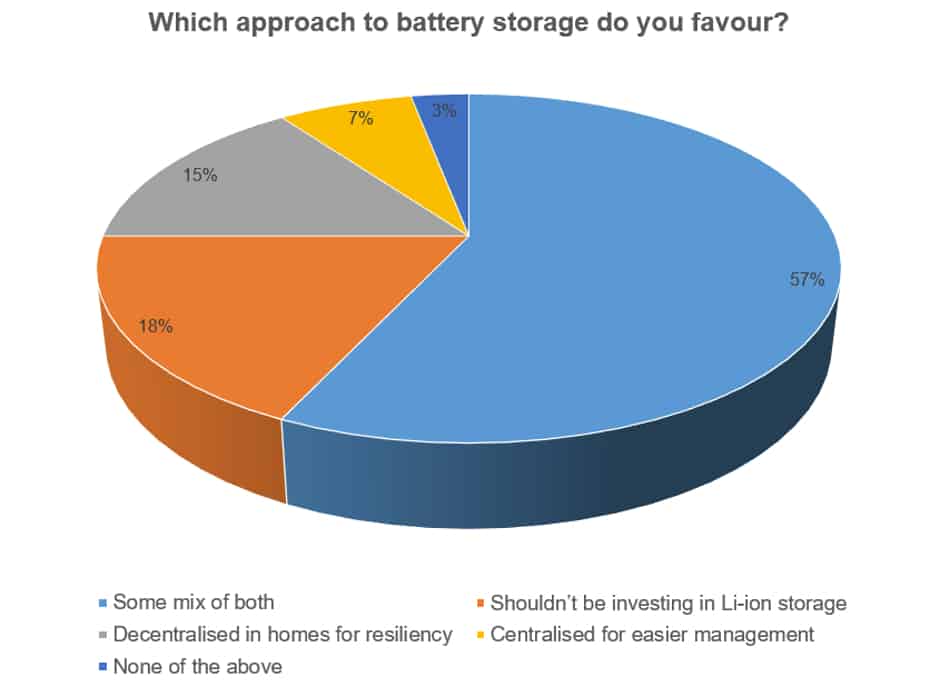Last week’s poll attracted a strong response of 644 votes, but the results require a little explanation.
The leading single option for battery storage mode was to locate batteries in a decentralised fashion, with units in homes, resulting in a more resilient system. This attracted 15 per cent of total votes, with centralised storage using very large capacity batteries attracting 7 per cent.
However, by far the most popular option, with a clear majority of 57 per cent of votes, was to opt for some mixture of both options. Meanwhile, 18 per cent of respondents believe that lithium-ion storage should not be the target for investment, and three per cent declined to pick an option.
The feedback section was as lively as ever, attracting 34 comments. Richard Masters commented that he didn’t favour any bulk battery storage system: “they’re toxic, unsustainable and very short lived.” His favoured option was for a low rpm motor/generator flywheel system.
Richard Annett, meanwhile, said that he favoured pumped storage, surely the ultimate in centralised energy storage. Hugh Sharman raised the issue of the environmental impact of lithium. None of the commercial recycling processes can recover the metal, he pointed out. “The lithium ends up in the slag which can be used to create ‘valuable’ concrete aggregates!”
He added that none of the principal metals in batteries are rare earths, but lithium and cobalt are relatively scarce with supply shortages threatened by 2020 and prices currently rising.
James Stewart suggested that thermal storage of 1000°C should be investigated, while Nick Woodward mentioned hydrogen storage, and several commenters noted that the need for more nuclear power should not be neglected.

READ MORE OF THE ENGINEER'S NEWS COVERAGE HERE


Swiss geoengineering start-up targets methane removal
Several rather dubious statistics in this report. IF methane had 120× the thermal effect of CO2 that would be TWO orders of magnitude. Two is not...